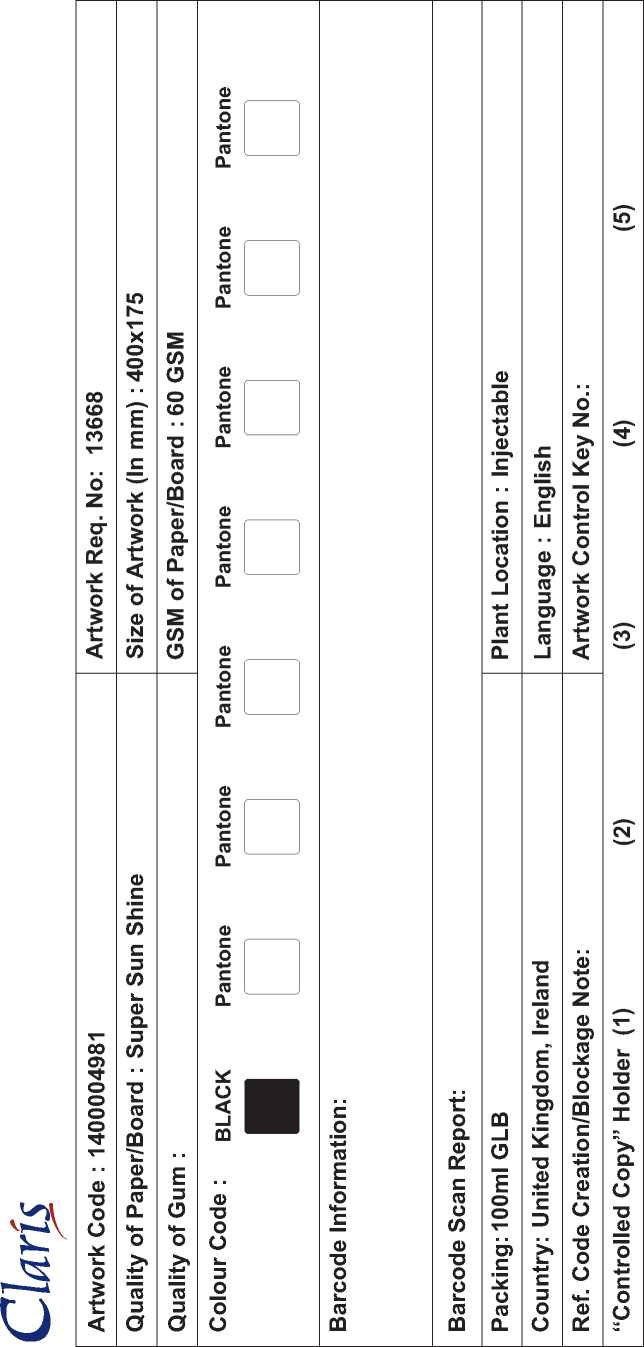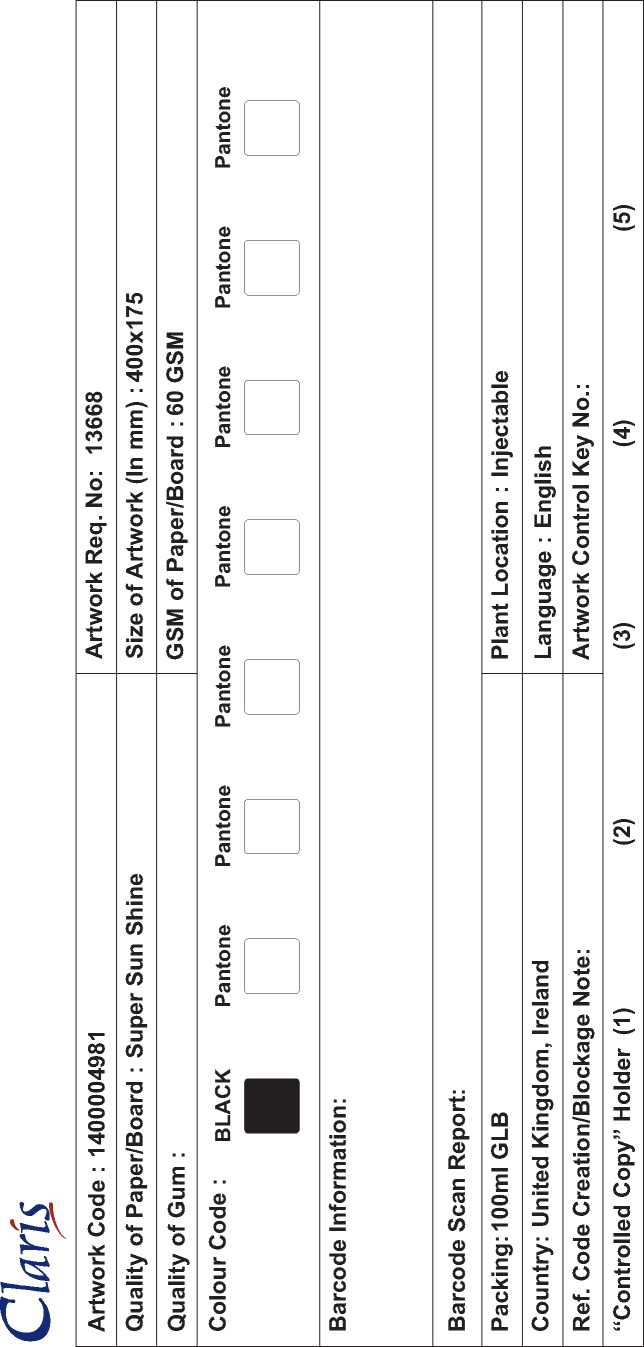Fluconazole 2Mg/Ml Solution For Infusion
175 X 400 mm font Size - 8.5 Helvetica
Patient Information Leaflet: Information for the user
Fluconazole 2 mg/ml Solution for Infusion
• Keep this leaflet. You may need to read it again.
• If you have any further questions, askyour doctor, nurse or your pharmacist.
• If any of the side effects get serious, or if you notice any side effects not listed in this leaflet, please tell your doctor, nurse or pharmacist.
In this leaflet:
1. What Fluconazole infusion is and what it is used for
2. Before you are given Fluconazole infusion
3. How you will be given Fluconazole infusion
4. Possible side effects
5. Howto store Fluconazole infusion
6. Further information
Fluconazole infusion belongs to the class of medicines called triazole derivatives, which are used to treat a variety of yeast and other fungal infections (Candida and cryptococci), particularly those affecting the mouth, throat, lungs, urinary tract, blood, and other organs. Fluconazole is also used to prevent fungal infections from occurring in people whose healthy defences against illness and infection are lessened (a suppressed immune system) such as cancer chemotherapy patients, organ transplant patients, and AIDS patients. It works by slowing the growth of fungi that cause infection.

You should not be given Fluconazole infusion if you are:
• allergic (hypersensitive) to Fluconazole or any of the ingredients of Fluconazole infusion or any other medicines which you have taken to treat fungal infection. Allergy symptoms may include itching, reddening of the skin or difficulty in breathing.
• taking either terfenadine or astemizole (antihistamine medicines used to treat allergies) or cisapride (used for stomach upsets), pimozide (used to treat psychosis), or quinidine (an antiarrhythmic drug, used to treat an irregular heartbeat) orervthromycin (an antibiotic).
Take special care with Fluconazole infusion and tell you doctor if you:
• develop a skin rash. AIDS patients tend to experience severe skin reactions following administration of many medicines
• are prone to having an irregular heartbeat (arrhythmias). Fluconazole should be used with caution if you are also receiving medicines that influence heart rhythm.
• have an imbalance of certain salts in the blood (an electrolyte disorder) such as low blood concentrations of potassium, magnesium or calcium; this should be corrected prior to treatment with Fluconazole.
• if you have problems with your liver. Tests done to check how your liver is working will need to be monitored by your doctor to avoid more severe damage to your liver.
Taking/Using other medicines
Please tell your doctor if you are taking or have recently taken any other medicines, including medicines obtained withouta prescription.
Please tell your doctor if you are taking any of these medicines at the same time as Fluconazole infusion as it may stop it working as well or cause an increase in side effects:
• alfentanil (an anaesthetic)
• amitriptyline and nortriptyline (used to treat depressive illness)
• amphotericin B (used to treat serious fungal infections)
• azithromvcin carbamazepine and phenytoin (used to control epilepsy)
• celecoxib (used to treat arthritis)
• fentanyl or methadone (pain relievers)
• halofantrine (used to treat malaria)
• hydrochlorothiazide (water tablets used to treat high blood pressure and rid the body of fluid)
• isoniazid, rifampicin and rifabutin (used to treat tuberculosis)
• midazolam and triazolam for anxiety or sleep disorders
• medicines which lower blood fat levels, such as atorvastatin, lovastatin, simvastatin and fluvastatin. If you experience symptoms such as muscle pain, loss of strength or weakness, please tell your doctor immediately. These may be signs of a change in skeletal muscle (myopathy) or breakdown of muscle fibres (rhabdomyolysis).
• medicines that reduce the body's natural defences against disease and infection (reduce or suppress immune response) such as ciclosporin, prednisone, sirolimus and tacrolimus
• medicines used to treat cancer such as cyclophosphamide, trimetrexate, vincristine or vinblastine
• medicines used to treat high blood pressure such as nefedipine, isradipine, nicardipine, amlodipine, losartan and felodipine
• medicines used to treat HIV infections such as didanosine, saquinavir or zidovudine
• non-steroidal anti-inflammatory drugs such as ibuprofen (used to treat inflammation and pain)
• oral anti-diabetic medicines such as glibenclamide, glimepiride, glipizide and tolbutamide
• theophylline (used to treat asthma)
• VitaminA
• warfarin (or similar drugs that thin the blood)
Pregnancy and Breastfeeding
If you are pregnant, likely to become pregnant or breast-feeding, you must tell your doctor before you are given this medicine.
Driving and using Machines
Fluconazole Infusion may cause dizziness, drowsiness or seizures. Make sure that you are not affected before you drive or operate machinery.
Important information about some of the ingredients of Fluconazole infusion
Fluconazole infusions contains salt (15.4 mmol sodium /100 ml). Take special care and tell your doctor if you are on a controlled/ low sodium diet.
This medicine will be given by your doctor or nurse as an intravenous infusion (drip) over a period of approximately 30 minutes.
Check with your doctor, nurse or pharmacist if you are not sure why you are being given Fluconazole infusion. Tell your doctor if you still feel unwell at the end of your prescribed course of treatment. Your doctor will decide how much Fluconzole you are given, depending on how bad your infection is and how well it responds to treatment. The usual doses of Fluconazole infusion for infections are listed below.
Adults
• Candida infections which have spread throughout the body (Systemic candidiasis)
- The usual initial dose is 400 - 800 mg fluconazole once daily on the first day of treatment. Therapy is then continued at a dose of200 mg fluconazole once daily
• Candida found in the urine (Severe candiduria)
- 100 mg fluconazole once daily.
- Thedurationoftreatmentis 14-30days.
• Infections involving the skin and mucous membranes (Severe mucosal candidiasis) Severe, oropharyngeal candidiasis
- 100 mg fluconazole once daily.
- The duration of treatment is 7-14 days.
• Infections involving the oesophagus (oesophageal candidiasis)
- 100 mg fluconazole once daily.
- Thedurationoftreatmentis 14-30days
• Infections involving the lungs (Non-invasive bronchopulmonary candidiasis)
- 100 mg fluconazole once daily.
- The duration of treatment is 14-30 days
• Cryptococcal meningitis
- initial dose is 400 mg fluconazole once daily on the first day of treatment. Therapy is then continued with 200 mg fluconazole once daily.
• For the prevention of cryptococcal meningitis
- aily dose of 100-200 mg is recommended in maintenance treatment to prevent relapse of cryptococcal meningitis inAIDS patients with treatment periods of up to 25 months
Children:
A maximum dose of 400 mg daily should not be exceeded in children. Special care is to be taken with children with impaired kidney function.
Children over 4 weeks of age:
• For treatment of infections involving the skin and mucous membranes (severe mucosal candidiasis)
- 3mg/kg daily.
• For the treatment of infections which have spread throughout the body (systemic candiditis) and cryptococcal infections
- 6 to 12 mg/kg daily, depending on the severity of the infection.
Children less than 2 weeks of age:
Newborn babies excrete Fluconazole slowly. In the first two weeks of life, the same mg/kg dosing as in older children should be used but administered every 72 hours. Dose should not exceed 12 mg/kg every 72 hours.
Children between 2 and 4 weeks of age:
- Dose should not exceed 12 mg/kg every 48 hours Elderly:
The usual adult dose should be used if there is no evidence of kidney impairment. §
O
O
Use in patients with impaired renal function: ^
In patients (including children) with impaired kidney function who will receive multiple doses of Fluconazole infusion, your doctor will determine your dosing schedule.
If you thinkyou have been given too much Fluconazole infusion
If you think that you have received too much Fluconazole infusion, tell your doctor or nurse.
Ifyou miss a dose of Fluconazole infusion
If you have missed a dose, please tell your doctor or nurse

Like all medicines, Fluconazole infusion can cause side effects, although not everybody gets them. Ifyou experience any of the following symptoms, or any symptoms not listed here after receiving this medicine, contact your doctor immediately.
• sudden wheeziness, difficulty in breathing or tightness in chest
• swelling of the eyelids, face or lips
• skin lumps or itchy red spots
• itch all overthe body.
• In rare cases, Fluconazole infusion can cause severe skin reaction with the formation of blisters and detachment of the skin.
• If you develop a rash while being treated for a fungal infection of the skin or mucous membranes (superficial fungal infection), further therapy should be discontinued.
• Ifyou haveAIDSyou are likely to be prone to skin reactions to many drugs, including Fluconazole infusion.
Common side effects (occurring in more than 1 in 100, but in less than 1 in 10 people):
• Stomach discomfort/acid indigestion • Vomiting
• Diarrhoea • Stomach ache
• Rash • Headache
• Feeling sick • Abnormal livertests (This medicine may affectthe results)
Uncommon effects (occurring in more than 1 in 1,000, but in less than 1 in 100 people):
• Anaemia (a blood disorderwhere the amount of red blood cells in the body is too low)
• Insomnia
• Muscle ache
• Fatigue
• Drowsiness
• Seizures (fits)
• Dizziness
Tremor
Light-headedness Impaired sense of taste Dry mouth Fever
Jaundice (yellowing of the whites of the eyesand/orskin)
Increased sweating Loss ofappetite
Severe constipation
Acid indigestion
Pins and needles
Vertigo
Itching
Wind
Feeling weak
Rare effects (occurring in more than 1 in 10,000, but in less than 1 in 1,000 people):
Abnormalities in the blood; these could increase the riskof bleeding orbruising
Life-threatening irregular heart beat
Abnormal ECG heart tracing Hepatitis (a swelling of the liver that makes it stop working well)
Liverfailure (when large parts of the liver become damaged beyond repair and the liver is no longer able to function)
Hair loss
Reporting of side effects
If you get any side effects, talk to your doctor or pharmacist. This includes any possible side effects not listed in this leaflet. You can also report any side effects directly (see details below). By reporting side effects you can help provide more information on the safety of this medicine.
United Kingdom Ireland
Yellow Card Scheme HPRAPharmacovigilance
Website:www.mhra.gov.uk/yellowcard Earlsfort Terrace
IRL-Dublin2
Tel: +353 1 6764971, Fax: +353 1 6762517 Website:www.hpra.ie, e-mail: medsafety@hpra.ie
Keep out of the reach and sight of children.
The doctor, nurse or pharmacist will check that the expiry date on the label has not passed. Once opened, any unused infusion should be discarded.
Do not store above 25°C. Do not freeze. Keep the vial or bag in the outer carton or over wrap pouch in order to protect from light.
What Fluconazole infusion contains
The active substance is fluconazole. Each ml of infusion contains 2 mg Fluconazole.
Each 100 ml vial or bag contains 200 mg fluconazole.
The other ingredients are sodium chloride and Waterfor Injections
What Fluconazole infusion looks like and contents of the pack
Fluconazole infusion is a clear and colourless solution for infusion in a 100 ml glass vial or plastic bag. Flconazole infusion is available in packs containing 1 vial or bag each containing 100 ml solution for infusion. For single use only.
Solutions containing visible solid particles should not be used.
Revision date: 01/2015
Marketing authorisation Holder
r]arir Claris Lifesciences UK Limited
Crewe Hall, Crewe, Cheshire, CW1 6UL, United Kingdom.
Manufacturer
Peckforton Pharmaceuticals Limited
Crewe Hall, Crewe, Cheshire,
CW1 6UL, United Kingdom.
2